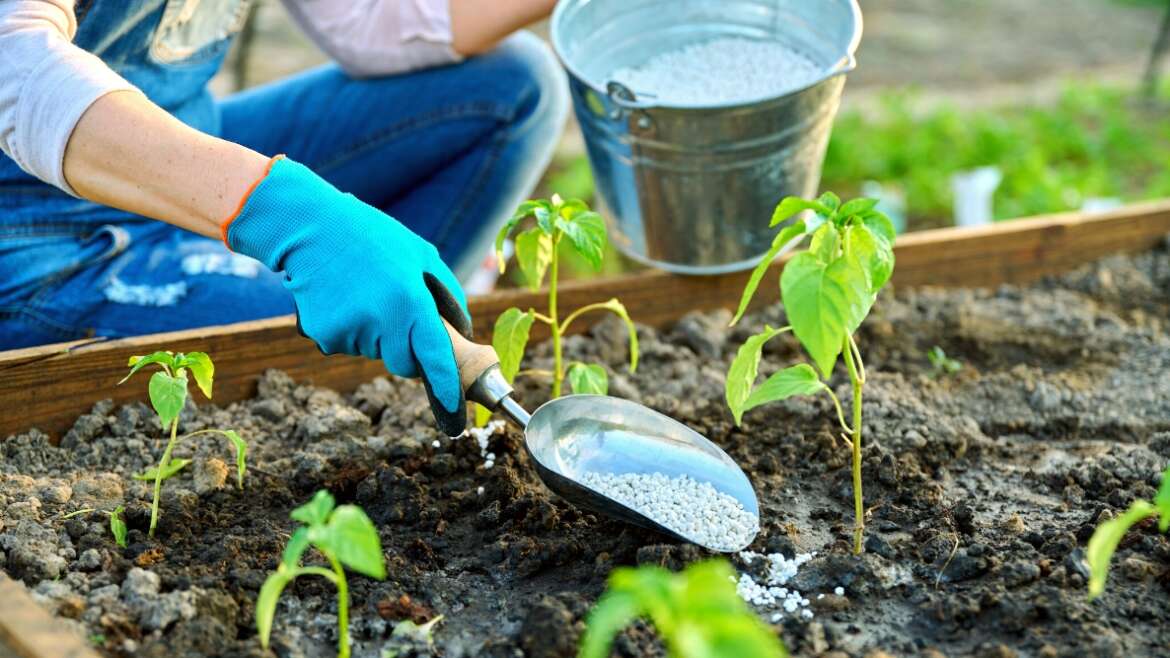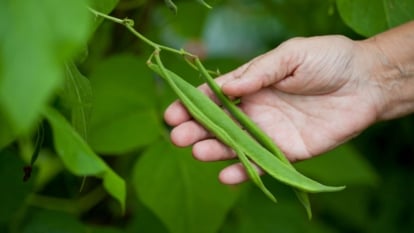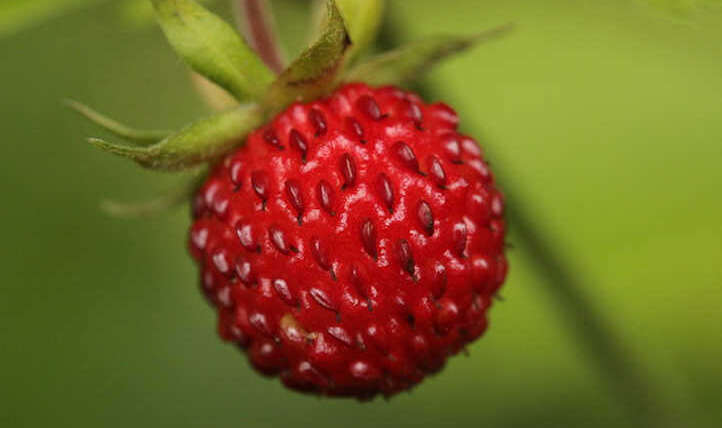We all know there can be too much of a good thing. Food and minerals are essential for survival, but overeating or taking excessive vitamins can cause major issues in the human body. Plants are just the same. Fertilizer can be helpful for supplying nutrients to plants that are growing in poor soils or containers.
However, too much fertilizer can “burn” leaves and roots, potentially killing a plant. To make matters worse, excessive fertilizer causes severe problems for the environment when it pollutes soil and waterways.
Let’s dig into the environmental issues caused by over-fertilizing, plant symptoms of excess nutrients, and how to prevent excess fertilizer use in the future.
The Short Answer
Over-fertilizing harms plants, promotes pests, pollutes water, and alters soil pH.
Yes, over-fertilizing can harm plants, ecology, soil, and waterways. Using too much fertilizer can cause a lot of problems for your plants and the environment. Over-fertilizing stresses plants, potentially causing “fertilizer burn” that turns leaves yellow, shrivels roots, and can even kill a plant from defoliation.
Synthetic commercial nitrogen fertilizers are particularly problematic because they are concentrated, “quick-release,” and flood the soil with nutrients all at once.
The key issues with over-fertilization include:
- Harm to Plants: Fertilizer burn stresses plants and harms their growth, causing yellow leaves, shriveled roots, defoliation, slow growth, nutrient imbalances, and even plant death.
- More Pest and Disease Problems: Excessive fertilizer makes plants more prone to attack from diseases and pests, especially sap-sucking insects like aphids.
- Harm to Ecology: When excess nutrients run off or leach into waterways, it can cause oxygen-devoid “dead zones” that make it impossible for aquatic organisms to survive.
- Harm to Soil: Too much fertilizer causes salt accumulation in the soil, altering the pH and making other nutrients less available to plants.
- Harm to Water: Groundwater contamination from leached fertilizer can pollute drinking water with nitrates that cause major issues to human health.
It’s important to test your soil nutrients before adding fertilizer and only amend with deficient nutrients. Never blindly dump fertilizer onto a lawn or garden before you address what the plants are lacking.
It’s best to avoid synthetic “quick-release” fertilizers and instead opt for homemade amendments like compost, vermicompost, cover crops, and decomposed leaves. Small quantities of organic slow-release fertilizer are best for gardens because they pose less risks for plants and the environment.
Read on to learn more science-backed details and practical solutions for issues with over-fertilizing.
The Long Answer
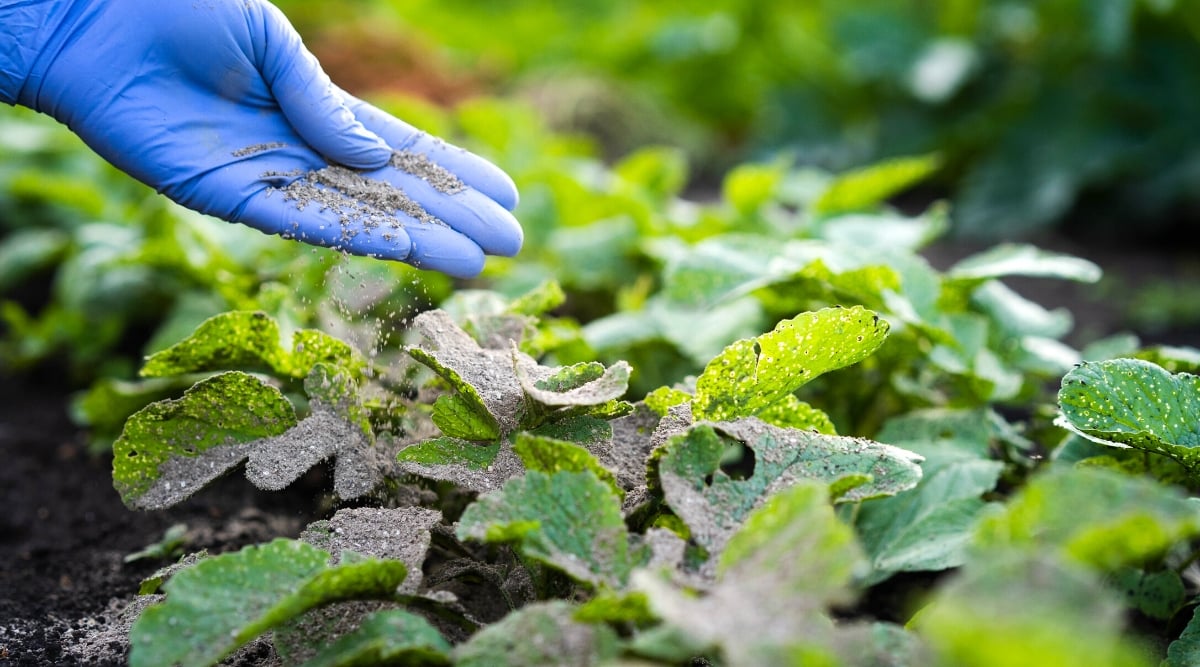 Synthetic fertilizers are unnecessary as nature provides organic alternatives, promoting healthier soil.
Synthetic fertilizers are unnecessary as nature provides organic alternatives, promoting healthier soil.
Using too much fertilizer isn’t only harmful to plants and the local ecology, but it’s actually unnecessary. Nature has grown plants for millennia without any need for synthetic fertilizers. Soil microorganisms naturally break down dead plant and animal materials to make the nutrients available to plants. Compost, aged manure, decomposed leaves, and vermicast (worm castings) are examples of nature’s organic fertilizers that pose far fewer risks than synthetic, commercial types.
Plants and microorganisms like bacteria and fungi are constantly working together to transform soil minerals into plant-available nutrients. For example, Rhizobium is a type of bacteria that forms nodules on the roots of leguminous plants.
They work symbiotically to transform atmospheric nitrogen into plant-available nitrogen, essentially formulating their own fertilizer without adding anything to the garden. This is why leguminous cover crops like clover and hairy vetch are so effective at improving soil nutrients for future plantings.
Other benefits of reducing (or eliminating) fertilizer use include healthier soil and less risk of crop damage caused by fertilizer burn.
What Are the Signs of Over-Fertilizing? (Fertilizer Burn)
 Applying too much fertilizer or concentrated fertilizers can cause fertilizer burn symptoms.
Applying too much fertilizer or concentrated fertilizers can cause fertilizer burn symptoms.
Fertilizer burn is what happens when you apply too much fertilizer to a plant. It can also occur when a concentrated fertilizer is applied to wet leaves or a plant doesn’t receive enough water after fertilizing.
Synthetic fertilizers like nitrates, ammonium sulfate, and potassium chloride (potash) are examples of fertilizers that are made of salts. These salts can build up in plant tissues and in the soil, causing symptoms of over-fertilization.
The major symptoms of fertilizer burn or excessive nutrients include:
- Fertilizer crust on soil surface (looks like salt)
- Yellowing (on lower leaves first)
- Overall wilting
- Brown leaf tips or edges (margins)
- Tips of leaves turning inward as if scorched
- Burnt appearance to foliage
- Limp blackened roots
- Leaf fall (defoliation)
- Very slow or halted growth
- Dead seedlings
While these symptoms can occur with overuse of any fertilizer, over-fertilizing is most common with synthetic nitrates or commercial fertilizers. The undiluted strength and “quick release” mode of action from synthetic nitrates make them instantly available to plants.
In contrast, organic fertilizers are “slow release” and must be broken down by soil microorganisms before plants can uptake the nutrients. Still, adding excessive manure, feather meal, or all-purpose organic fertilizer can still cause fertilizer burn.
Organic vs. Inorganic Fertilizer
 Inorganic and organic fertilizers differ in origin and release speed.
Inorganic and organic fertilizers differ in origin and release speed.
There are two broad categories of fertilizer: organic and inorganic. Organic fertilizer is derived from living or once-living things, such as dead plants and animal byproducts like manure or bone. Inorganic fertilizer is synthetically derived, sometimes using minerals from the earth.
Inorganic fertilizer provides a rapid dose of nutrients. These quick-release fertilizers pose the greatest risk for over-fertilization and nutrient burn.
Synthetic fertilizers include:
- Ammonium nitrate
- Ammonium sulfate
- Urea
- Superphosphate
- Potash (potassium chloride)
- Magnesium sulfate
- Sodium nitrate
- Chelated iron
On the other hand, organic fertilizer offers a slow delivery of nutrients over time.
Examples of organic fertilizers include:
- Compost
- Vermicompost
- Aged manure
- Decomposed leaves
- Feather meal
- Bone meal
- Blood meal
- Fish emulsion
- Kelp
- Bat guano
Read your fertilizer ingredient label before applying it to your garden!
How to Know if Fertilizer is Organic
 Organic gardening avoids toxins and promotes environmental sustainability.
Organic gardening avoids toxins and promotes environmental sustainability.
Many of us choose organic gardening methods because we want to avoid toxins in our food and help the environment. “Organic” can be a confusing word in the food world because it describes two related but different things:
- In food and farming, organic food is grown without synthetic pesticides, fertilizers, or herbicides. On a commercial scale, organics is regulated by the USDA National Organic Program.
- In chemistry, organic means carbon-containing. Inorganic means a compound doesn’t contain carbon. Organic fertilizers come from the earth, while inorganic fertilizers are man-made.
The easiest way to know if your fertilizer is organic is to look for the OMRI label. OMRI is the Organic Materials Review Institute responsible for regulating organic inputs in agriculture. They are the official resource for determining which products are approved for organic use in farming and gardening.
The Best Organic Fertilizer
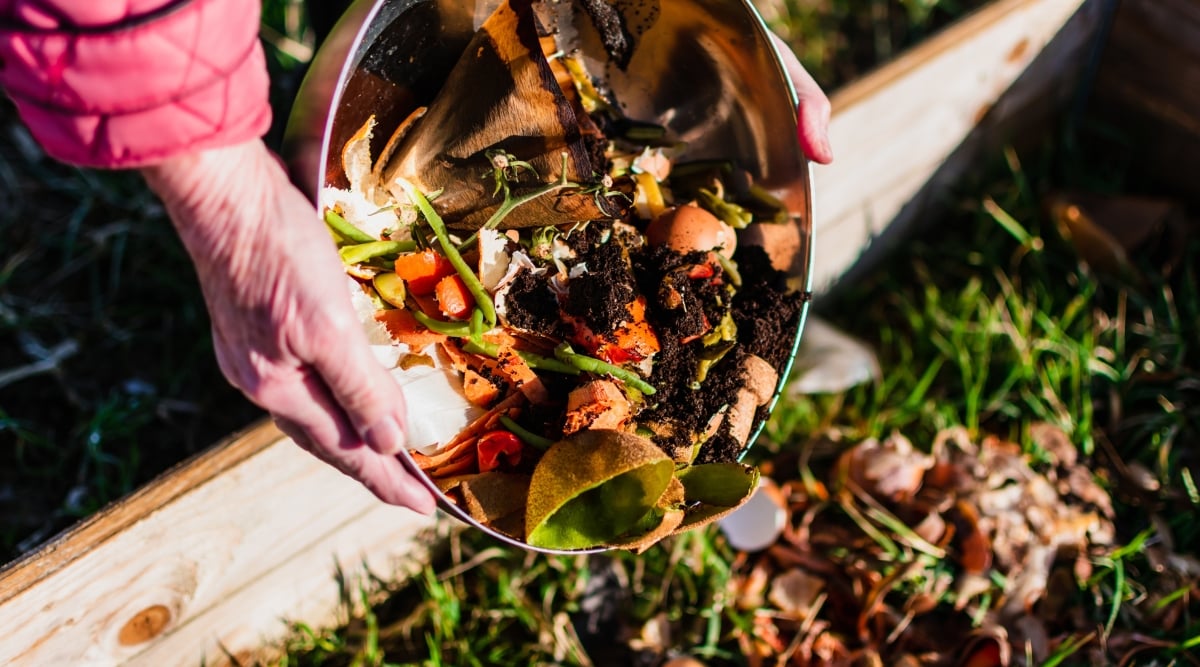 Home composting and vermicomposting are natural methods for organic gardening without the risk of fertilizer burn.
Home composting and vermicomposting are natural methods for organic gardening without the risk of fertilizer burn.
The absolute best way to ensure your gardens’ nutrients are organic is to simply make your own. Home composting and vermicomposting (worm composting) are the best time-tested DIY methods for creating natural, organic fertility without purchasing a bag of fertilizer. You can use natural waste generated on your property, such as kitchen scraps, leaves, grass clippings, and crop residues, to provide all the nutrients your plants need without risking fertilizer burn.
Composts are rich in biodiversity microorganisms like beneficial bacteria and fungi to nurture your garden soil so more minerals and nutrients can be available to your plants over time. If you build “lasagna garden” (hugelkultur) beds with layers of decomposing matter, you can create a long-lasting resource of organic soil nutrients so your plants never need supplemental fertilization.
If you have backyard chickens or other livestock, their manure can also be used as fertilizer, but it is important to compost and age it before adding it to the garden. High-nitrogen manure, such as raw chicken poop, can also cause symptoms of fertilizer burn. Never apply raw manure directly to your garden.
What to Do If You Add Too Much Fertilizer
If you accidentally dumped too much fertilizer, don’t panic yet! Some over-fertilized plants can be saved, depending on how quickly you notice and how much fertilizer you added. Here are a few things to do to save your plants:
Flush it Out
 Thoroughly rinse soil and leaves with water to remove excess foliar fertilizer.
Thoroughly rinse soil and leaves with water to remove excess foliar fertilizer.
First, thoroughly rinse the soil with lots of water. If you apply foliar fertilizer directly to the leaf surface, it’s also important to rinse the leaves with water to remove any remaining residues.
For potted plants, hold the container under a faucet or hose and flush water through the soil until it pours out of the drainage hole for several minutes. The water will help wash away excess fertilizer by flushing out the granules and salts through the container.
For in-ground beds, lawns, and outdoor plants, run a soaker hose, irrigation lines, sprinkler, or garden hose over the soil until it is highly saturated and almost flooded. If using soaker hoses or drip lines, you may need to leave them running for an hour or more. A lot of water is needed to flush the area around the roots. You want the plant to uptake as much water as possible to dilute any concentrated nutrients inside the plant tissues.
While many of us fear overwatering, a deep flush for a single day is not overwatering your plant. The soil may look very saturated, but it will have plenty of time to dry out. You should not repeat this on a regular basis; it is only an emergency measure to flush out excess nutrients.
Unfortunately, flushing water poses a big threat to the environment because that nutrient-filled water must go somewhere (typically down into the soil and groundwater). In the future, it’s very important to prevent this.
Scoop Out Visible Fertilizer
 Remove visible fertilizer granules or salty crust from the soil surface immediately.
Remove visible fertilizer granules or salty crust from the soil surface immediately.
If a salty-looking crust has already formed on the soil surface or you can still see fertilizer granules, it is helpful to remove them ASAP. Use gloved hands or a small trowel to scoop away any visible fertilizer and throw it away.
Many synthetic granular fertilizers look like bright-colored balls that are easy to spot. These coatings are designed for visibility in the soil, but if the fertilizer has already been exposed to moisture and started breaking down, the chemicals dissolve into the soil. Still, it can be useful to scoop out the upper inch or so of soil to remove any nutrients that remain.
If you apply a large amount of fresh manure or nitrogen-rich organic fertilizer like bone meal to the soil surface, you can also use the manual removal method. Shovel away any remnants of fertilizer that you can see. If you mixed the fertilizer into the soil, you may need to scoop away the upper inch of soil to prevent more nutrients from leaching in. You can save this nutrient-rich soil for future dilution and use it so it doesn’t go to waste. Some topsoil may be lost in this process, but it could save your plant. You can always amend the container or outdoor bed with quality aged compost later on.
As we discussed above, organic fertilizers are slow-release, so they require microbial processes to break them down and make the nutrients available to plants. If the fertilizer was applied very recently, you have a much better chance of saving the plant. However, this method won’t work for concentrated liquid organic fertilizers like fish emulsion because the liquid quickly infiltrates the soil layers.
How Excessive Fertilizer Harms Waterways: Dead Zones
 Overfertilization leads to eutrophication, polluting soil and water.
Overfertilization leads to eutrophication, polluting soil and water.
Excessive fertilization pollutes the soil and water via a phenomenon called eutrophication. Fertilizer runs off or leaches into groundwater and flows into rivers, lakes, and oceans. On a large scale, the Dead Zone in the Gulf of Mexico is a prime example of the major ecological damage that can occur when growers overuse fertilizer.
Excess nitrogen and phosphorous leach from fields into the Mississippi River and its tributaries. These nutrients flow into the Gulf of Mexico, where they cause an overgrowth of algae (called an algal bloom) on the water surface, creating a “hypoxic” zone in the water beneath so little to no life can grow. The lack of oxygen makes it impossible for plankton, fish, and larger organisms to survive,
Scientists have proven that dead zones are spreading in oceans around the world due to excessive fertilizer use in residential and agricultural areas. You can do your part by avoiding excess fertilizer in your yard and garden. In turn, you’ll also enjoy healthier plants and a cheaper bill at the garden store. Remember, nature has created its own “fertilizer” for thousands of years before humans. Supplemental applications are only necessary in small amounts under certain conditions.
Preventing Fertilizer Pollution: How to Dilute Fertilizer
 Prevent fertilizer pollution with organic, diluted options.
Prevent fertilizer pollution with organic, diluted options.
The best option for preventing fertilizer pollution is to choose organic, slow-release, diluted fertilizers. If you need to use a concentrated granular or liquid fertilizer, always dose and dilute per the package instructions before applying.
When in doubt, less is more! Dilute more than the package says to be safe. Many concentrated fertilizers require just a half teaspoon of fertilizer per gallon of water. Pre-mix fertilizer in a 5-gallon bucket or a watering can before applying, and pour slowly onto the soil surface. It is recommended that beginners avoid foliar feeding (applying fertilizers to leaf surfaces) because it poses more risk for fertilizer burn.
Do not mega-dose your plants with fertilizer. If you notice signs that they aren’t getting enough nutrients, you can always supplement again later in the season.
Small incremental side-dressings or watering are better than dumping large amounts of nutrients at a time. You wouldn’t want to eat your entire week’s worth of meals in one sitting! Your plants don’t either.
If you prefer to only fertilize once per season, opt for slow-release microbially-rich fertilizers like compost or worm castings.
The old country phrase “If it ain’t broke, don’t fix it” is a funny yet relevant truth in the realm of fertilization. If your plants are growing vigorously and appear healthy, there is no need to apply fertilizer.
Final Thoughts
Burning your plants with excessive nutrients is not an enjoyable experience, but it is a great opportunity for learning. Some plants can be saved by flushing out the soil with deep watering or scooping out visible fertilizer granules.
To avoid using too much fertilizer in the future, remember to:
- Choose organic, slow-release fertilizers like compost whenever possible.
- Avoid heavily concentrated synthetic liquid fertilizers.
- Always dilute per the package instructions.
- Water generously when fertilizing.
- Support healthy soil biology by minimizing salt-based synthetic fertilizer use.
- Amend soil with compost, aged manure, or leaf mulch.
- Opt for small, incremental feedings rather than single mega-doses of fertility.
- Don’t fertilize unless your plants really need it.


